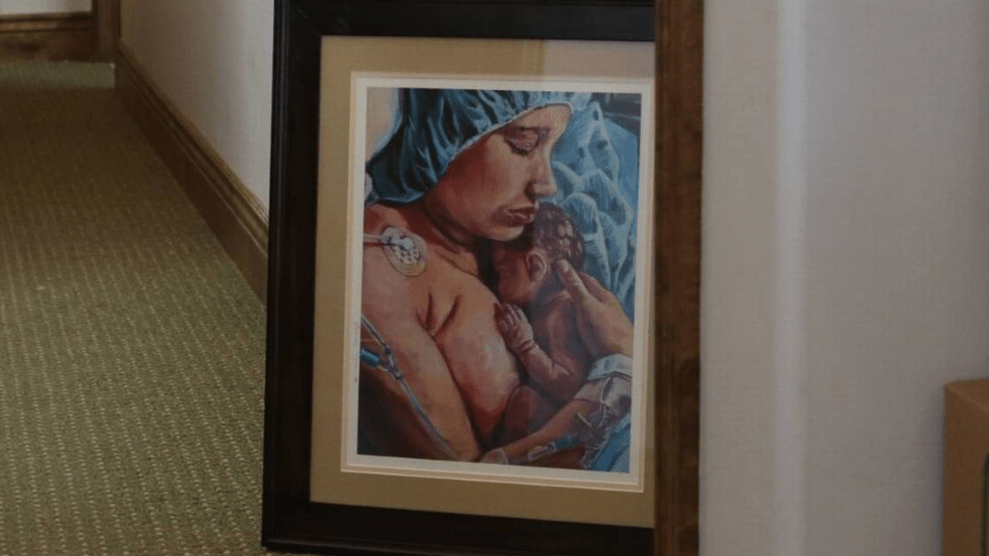A story that the U.S. government hoped would never see the light of day has finally been published—60 years after it was spiked by military censors. The discovery of reporter George Weller’s first-hand account of conditions in post-nuclear Nagasaki sheds light on one of the great journalistic betrayals of the last century: the cover-up of the effects of the atomic bombing on Japan.
On August 6, 1945, the U.S. dropped an atomic bomb on Hiroshima; three days later, Nagasaki was hit. General Douglas MacArthur promptly declared southern Japan off-limits, barring the press. Over 200,000 people died in the atomic bombings of the cities, but no Western journalist witnessed the aftermath and told the story. Instead, the world’s media obediently crowded onto the USS Missouri off the coast of Japan to cover the Japanese surrender.
A month after the bombings, two reporters defied MacArthur and struck out on their own. Weller, of the Chicago Daily News, took row boats and trains to reach devastated Nagasaki. Independent journalist Wilfred Burchett rode a train for 30 hours and walked into the charred remains of Hiroshima.
Both men encountered nightmare worlds. Burchett sat down on a chunk of rubble with his Baby Hermes typewriter. His dispatch began: “In Hiroshima, thirty days after the first atomic bomb destroyed the city and shook the world, people are still dying, mysteriously and horribly—people who were uninjured in the cataclysm from an unknown something which I can only describe as the atomic plague.”
He continued, tapping out the words that still haunt to this day: “Hiroshima does not look like a bombed city. It looks as if a monster steamroller has passed over it and squashed it out of existence. I write these facts as dispassionately as I can in the hope that they will act as a warning to the world.”
Burchett’s article, headlined THE ATOMIC PLAGUE, was published on September 5, 1945 in the London Daily Express. The story caused a worldwide sensation, and was a public relations fiasco for the U.S. military. The official U.S. narrative of the atomic bombings downplayed civilian casualties and categorically dismissed as “Japanese propaganda” reports of the deadly lingering effects of radiation.
So when Pulitzer Prize-winning reporter George Weller’s 25,000-word story on the horror that he encountered in Nagasaki was submitted to military censors, Gen. MacArthur personally ordered the story killed, and the manuscript was never returned. As Weller later summarized his experience with MacArthur’s censors, “They won.”
Last month, Weller’s son Anthony discovered a carbon copy of the suppressed dispatches among his late father’s papers (George Weller died in 2002). Unable to find an interested American publisher, Anthony Weller sold the account to Mainichi Shimbun, a large Japanese newspaper. Now, on the sixtieth anniversary of the atomic bombings, Weller’s account can finally be read. (The first of Weller’s four dispatches can be found here.)
“In swaybacked or flattened skeletons of the Mitsubishi arms plants is revealed what the atomic bomb can do to steel and stone, but what the riven atom can do against human flesh and bone lies hidden in two hospitals of downtown Nagasaki,” wrote Weller. A month after the bombs fell, he observed, “The atomic bomb’s peculiar ‘disease,’ uncured because it is untreated and untreated because it is not diagnosed, is still snatching away lives here.”
After killing Weller’s reports, U.S. authorities tried to counter Burchett’s articles by attacking the messenger. MacArthur ordered Burchett expelled from Japan (the order was later rescinded), his camera mysteriously vanished while he was in a Tokyo hospital, and U.S. officials accused him of being influenced by Japanese propaganda.
Then the U.S. military unleashed a secret propaganda weapon: they deployed their very own Timesman. It turns out that William L. Laurence, the science reporter for the New York Times, was also on the payroll of the War Department. For four months, while still reporting for the Times, Laurence had been writing press releases for the military explaining the atomic weapons program; he also wrote statements for President Truman and Secretary of War Henry Stimson. He was rewarded by being given a seat on the plane that dropped the bomb on Nagasaki, an experience that he described in the Times with religious awe.
Three days after publication of Burchett’s shocking dispatch, Laurence had a front page story in the Times disputing the notion that radiation sickness was killing people. His news story included this remarkable commentary: “The Japanese are still continuing their propaganda aimed at creating the impression that we won the war unfairly, and thus attempting to create sympathy for themselves and milder terms… Thus, at the beginning, the Japanese described ‘symptoms’ that did not ring true.”
Laurence won a Pulitzer Prize for his reporting on the atomic bomb, and his faithful parroting of the government line was crucial in launching a half-century of silence about the deadly lingering effects of the bomb. It is high time for the Pulitzer board to strip Hiroshima’s apologist and his newspaper of their undeserved prize.
Sixty years late, Weller’s censored account stands as a searing indictment not only of the inhumanity of the atomic bomb, but of the danger of journalists embedding with the government to deceive the world.











